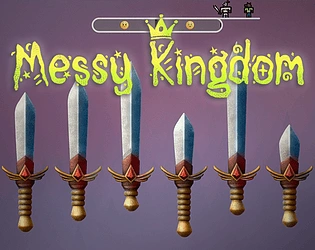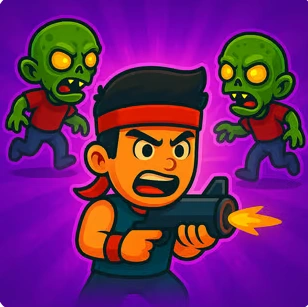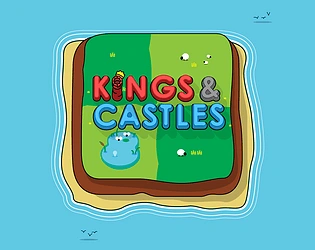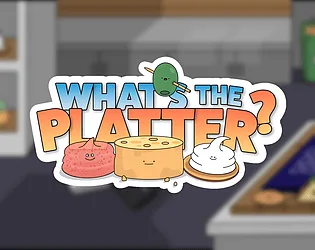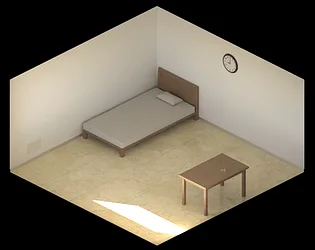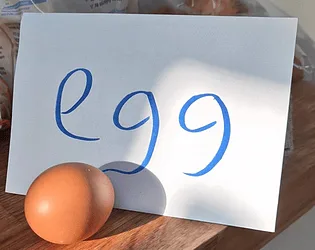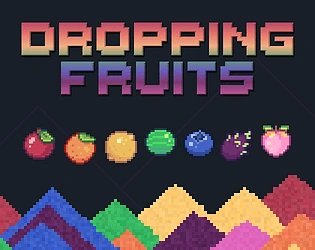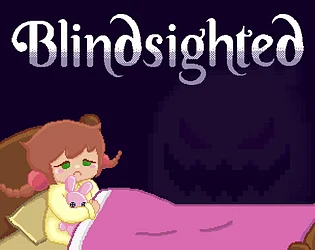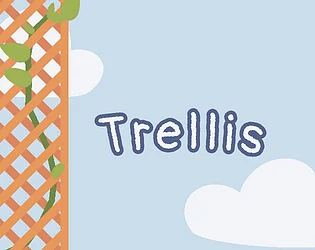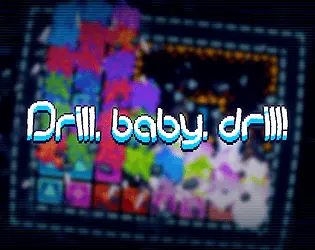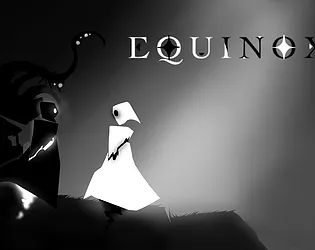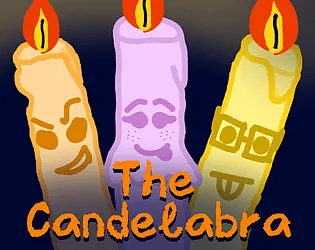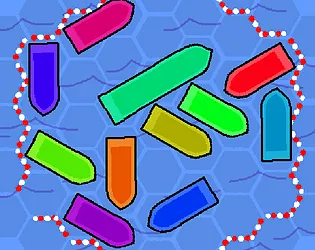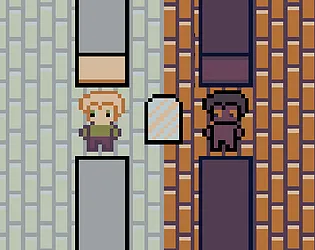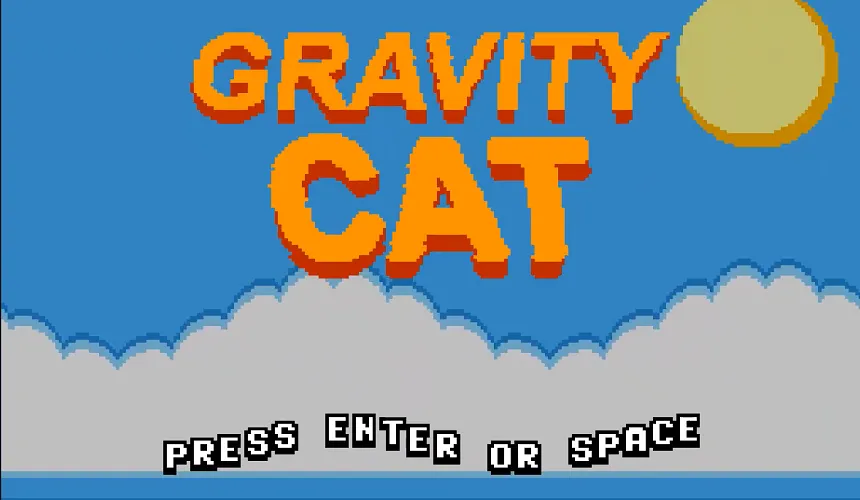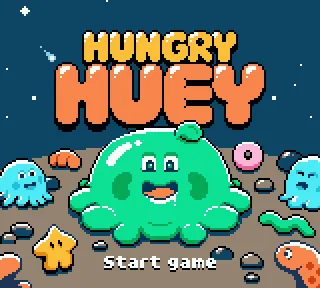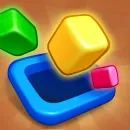
Cube to Hole
Match colored cubes with vortex holes in this strategic sorting puzzle
Cube to Hole
Cube to Hole — Sort Colored Cubes into Matching Vortexes

Cube to Hole challenges your strategic thinking through deceptively simple color-matching mechanics. A game board filled with multicolored cubes awaits, each needing to be sorted into its corresponding colored vortex hole. But here's the catch: you can't just randomly click holes and hope for the best. Cubes must be near their matching vortex and have clear paths to be absorbed. Plan your moves carefully, sort strategically, and clear the board to advance.
🎮 What is Cube to Hole?
Cube to Hole is a logic-based sorting puzzle that tests your ability to plan sequential moves. The game board displays a grid filled with colored cubes—reds, blues, yellows, greens, and more depending on the level's complexity. Scattered among these cubes are vortex holes, each matching one of the cube colors.
Your objective is straightforward: get all cubes into their matching colored holes until the board is completely clear. But execution requires strategy. When you click a colored vortex, it activates and attempts to "swallow" nearby cubes of the same color. However, cubes can only be absorbed if they're:
- Adjacent or near the vortex (within range)
- Not blocked by other cubes or obstacles
- The correct color match for that specific vortex
This creates a puzzle where move order matters dramatically. Activating the wrong vortex first might pull in cubes that were blocking access to other colors, or conversely, it might leave cubes isolated with no clear path to their matching holes.
As you progress through Cube to Hole, levels introduce more colors, more cubes, and more complex board layouts. Early levels might feature just two or three colors in simple arrangements. Later levels present intricate configurations with five or more colors, requiring you to visualize multiple moves ahead—like playing chess with colored cubes.
The satisfaction comes from finding the optimal sorting sequence that efficiently clears the board without creating unsolvable situations.
🕹️ How to Play Cube to Hole
Cube to Hole uses simple click-based controls that let you focus entirely on puzzle-solving strategy:
Controls
| Action | Desktop | Mobile/Tablet |
|---|---|---|
| Activate Vortex | Click on colored hole | Tap on colored hole |
| Select Vortex | Click vortex to pull matching cubes | Tap vortex to pull matching cubes |
| Observe Board | Visual examination | Visual examination |
| Restart Level | Click restart button | Tap restart button |
Gameplay Mechanics
- Examine the board – Survey cube positions and vortex hole locations
- Identify color patterns – Note which colors have clear paths to their vortexes
- Click a vortex – Activate a colored hole to pull in matching cubes
- Watch cubes get absorbed – Cubes within range disappear into the vortex
- Plan next move – Consider how the board changed and which vortex to activate next
- Clear the board – Remove all cubes by sorting them into matching holes
- Progress to next level – Tackle increasingly complex color-sorting challenges
Strategy Tips
- Start with obstructing colors – Activate vortexes that will clear blocking cubes first
- Work from edges inward – Often, edge vortexes should be activated before central ones
- Visualize the sequence – Plan 2-3 moves ahead before clicking any vortex
- Look for chain reactions – Sometimes removing one color creates access for others
- Avoid creating isolated cubes – Don't activate vortexes that leave cubes unreachable
- Restart if stuck – If you create an unsolvable state, don't hesitate to restart and try a different sequence
📸 Cube to Hole Gameplay Walkthrough
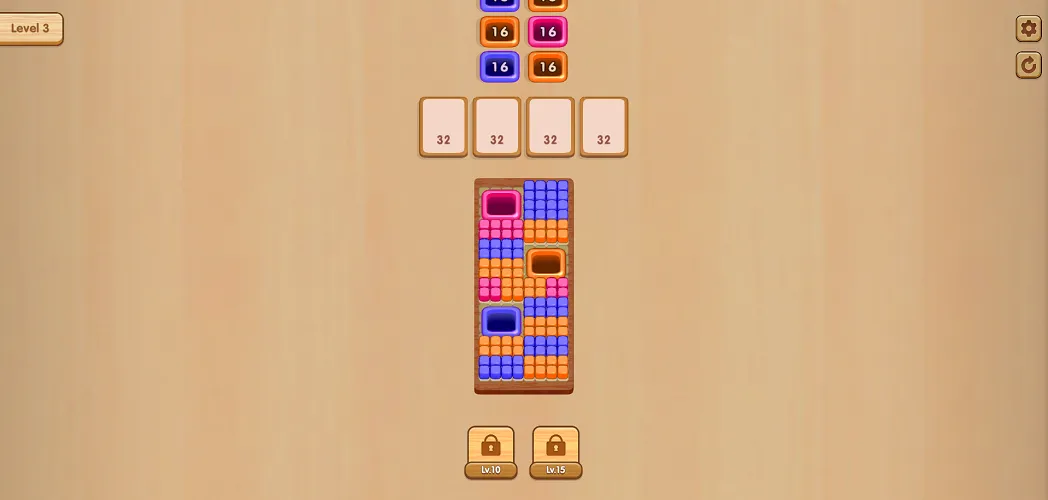
🎨 Simple Color Sorting
Your first Cube to Hole puzzles introduce the core mechanics gently. You might see a small grid with red cubes, blue cubes, and their corresponding red and blue vortex holes.
The solution is fairly obvious: click the red vortex to absorb red cubes, then click the blue vortex to absorb blue cubes. Or vice versa—at this early stage, move order doesn't matter much because the board is simple.
These introductory levels teach you how vortex activation works. You'll notice that cubes near the vortex get pulled in with a satisfying visual effect, disappearing from the board. You'll also learn the range limitation—cubes too far away won't be absorbed, even if they're the right color.
Within a few levels, you've internalized the basic mechanic and you're ready for the real challenge: strategic sequencing.
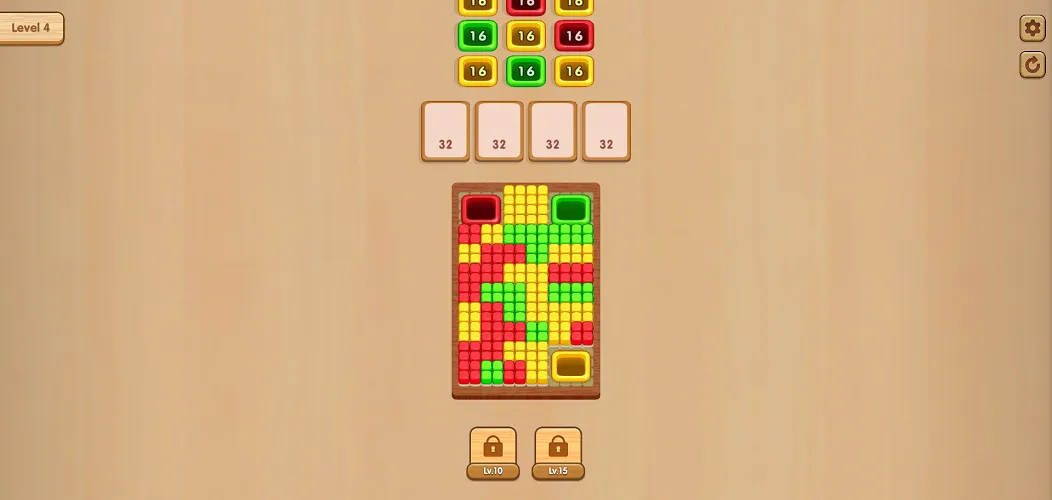
🧩 Strategic Sequencing Challenges
As Cube to Hole levels progress, the importance of move order becomes critical. You might encounter a board where:
- Red cubes are blocking the path to a blue vortex
- Green cubes are surrounded by yellow cubes
- Purple cubes are scattered across the board with no clear vortex access
Now you need to think strategically. If you activate the blue vortex first, nothing happens—the blue cubes are blocked by reds. But if you activate the red vortex first, the red cubes disappear, clearing the path for blue cubes to reach their vortex.
This domino effect is the heart of Cube to Hole's puzzle design. Each move should ideally:
- Clear cubes of one color
- Create better access for remaining colors
- Avoid isolating cubes that can't reach their vortexes
Finding the optimal sequence feels like solving a colorful logic puzzle. Sometimes there's one perfect move order that clears the board efficiently. Other times, multiple valid sequences exist, but some are more elegant than others.
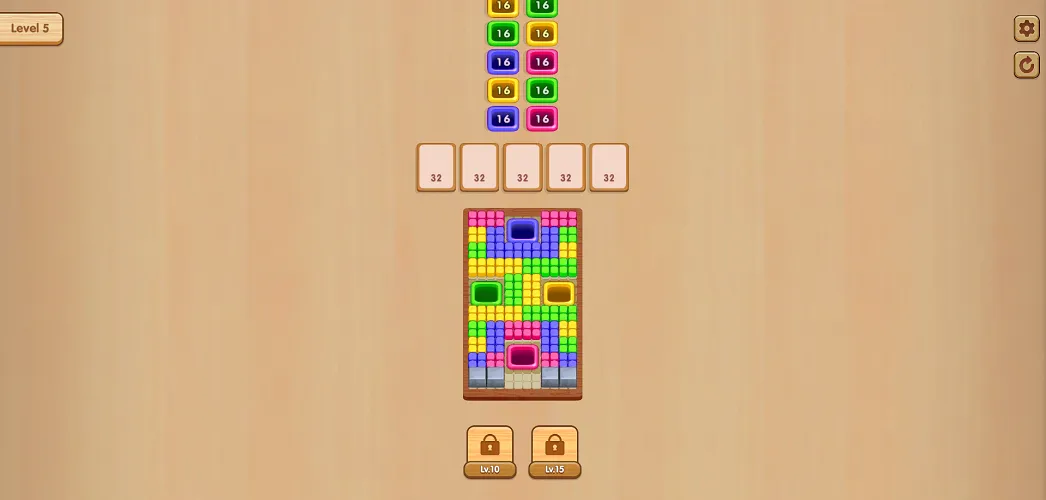
🎯 Advanced Multi-Color Boards
Advanced Cube to Hole levels introduce boards with five, six, or even more distinct colors. The visual complexity increases dramatically—the board becomes a rainbow grid where identifying optimal move sequences requires careful analysis.
You might encounter:
Layered blocking – Color A blocks Color B, which blocks Color C, creating a three-layer dependency where you must activate vortexes in specific order (C → B → A).
Split color groups – One color has cubes in two separate board areas, requiring multiple vortex activations or strategic clearing to unite them.
Vortex positioning challenges – Holes positioned in corners or edges with limited reach, making cube access more difficult.
Dense boards – Grids packed with cubes where every move significantly reshapes the layout.
These advanced puzzles demand visualization skills. Before clicking any vortex, experienced players mentally simulate the entire sequence: "If I click red, these cubes disappear. Then blue becomes accessible. Then green. Then yellow finishes the board."
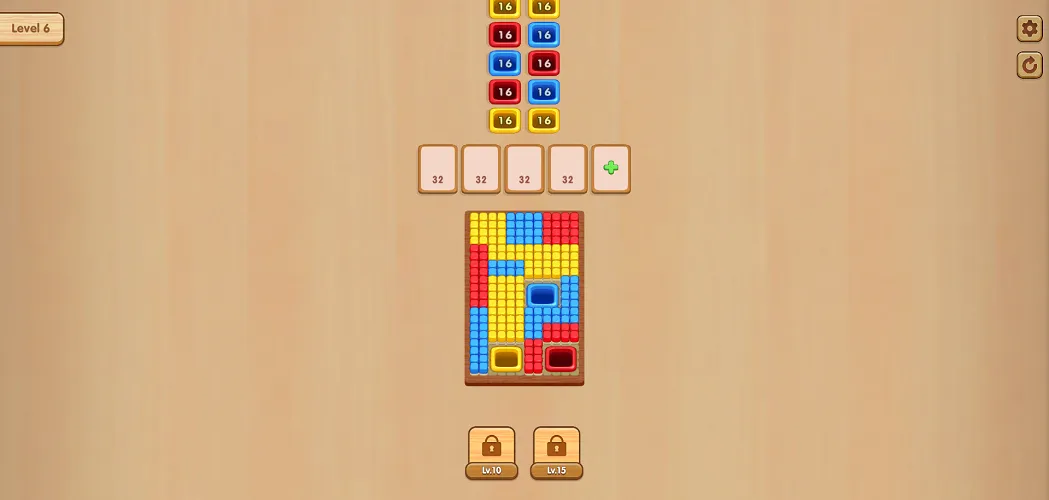
🏆 Perfect Board Clearing
When you successfully clear a Cube to Hole board, there's a satisfying moment of watching the final cubes disappear into their vortexes, leaving nothing but an empty grid. You've solved the puzzle—not through luck, but through strategic thinking and careful planning.
The most satisfying victories come from levels where you:
- Found the non-obvious optimal sequence
- Avoided the tempting but incorrect first move
- Visualized the complete solution before starting
- Cleared the board with minimal trial-and-error
As levels grow more complex, you develop pattern recognition skills. You start to intuitively see which colors should go first, which vortexes will create the most useful board changes, and which moves will lead to unsolvable dead ends.
Cube to Hole proves that compelling puzzle design doesn't require complicated mechanics. By combining simple color matching with strategic move sequencing, the game creates challenges that are easy to understand but satisfyingly difficult to master.
Whether you're casually sorting colors or intensely planning optimal move sequences, Cube to Hole delivers the pure logical satisfaction that makes great puzzle games addictive. Every board is a fresh color-sorting challenge, every level completion is a small victory of strategic thinking over chaos.
Cube to Hole — Sort Colored Cubes into Matching Vortexes

Cube to Hole challenges your strategic thinking through deceptively simple color-matching mechanics. A game board filled with multicolored cubes awaits, each needing to be sorted into its corresponding colored vortex hole. But here's the catch: you can't just randomly click holes and hope for the best. Cubes must be near their matching vortex and have clear paths to be absorbed. Plan your moves carefully, sort strategically, and clear the board to advance.
🎮 What is Cube to Hole?
Cube to Hole is a logic-based sorting puzzle that tests your ability to plan sequential moves. The game board displays a grid filled with colored cubes—reds, blues, yellows, greens, and more depending on the level's complexity. Scattered among these cubes are vortex holes, each matching one of the cube colors.
Your objective is straightforward: get all cubes into their matching colored holes until the board is completely clear. But execution requires strategy. When you click a colored vortex, it activates and attempts to "swallow" nearby cubes of the same color. However, cubes can only be absorbed if they're:
- Adjacent or near the vortex (within range)
- Not blocked by other cubes or obstacles
- The correct color match for that specific vortex
This creates a puzzle where move order matters dramatically. Activating the wrong vortex first might pull in cubes that were blocking access to other colors, or conversely, it might leave cubes isolated with no clear path to their matching holes.
As you progress through Cube to Hole, levels introduce more colors, more cubes, and more complex board layouts. Early levels might feature just two or three colors in simple arrangements. Later levels present intricate configurations with five or more colors, requiring you to visualize multiple moves ahead—like playing chess with colored cubes.
The satisfaction comes from finding the optimal sorting sequence that efficiently clears the board without creating unsolvable situations.
🕹️ How to Play Cube to Hole
Cube to Hole uses simple click-based controls that let you focus entirely on puzzle-solving strategy:
Controls
| Action | Desktop | Mobile/Tablet |
|---|---|---|
| Activate Vortex | Click on colored hole | Tap on colored hole |
| Select Vortex | Click vortex to pull matching cubes | Tap vortex to pull matching cubes |
| Observe Board | Visual examination | Visual examination |
| Restart Level | Click restart button | Tap restart button |
Gameplay Mechanics
- Examine the board – Survey cube positions and vortex hole locations
- Identify color patterns – Note which colors have clear paths to their vortexes
- Click a vortex – Activate a colored hole to pull in matching cubes
- Watch cubes get absorbed – Cubes within range disappear into the vortex
- Plan next move – Consider how the board changed and which vortex to activate next
- Clear the board – Remove all cubes by sorting them into matching holes
- Progress to next level – Tackle increasingly complex color-sorting challenges
Strategy Tips
- Start with obstructing colors – Activate vortexes that will clear blocking cubes first
- Work from edges inward – Often, edge vortexes should be activated before central ones
- Visualize the sequence – Plan 2-3 moves ahead before clicking any vortex
- Look for chain reactions – Sometimes removing one color creates access for others
- Avoid creating isolated cubes – Don't activate vortexes that leave cubes unreachable
- Restart if stuck – If you create an unsolvable state, don't hesitate to restart and try a different sequence
📸 Cube to Hole Gameplay Walkthrough

🎨 Simple Color Sorting
Your first Cube to Hole puzzles introduce the core mechanics gently. You might see a small grid with red cubes, blue cubes, and their corresponding red and blue vortex holes.
The solution is fairly obvious: click the red vortex to absorb red cubes, then click the blue vortex to absorb blue cubes. Or vice versa—at this early stage, move order doesn't matter much because the board is simple.
These introductory levels teach you how vortex activation works. You'll notice that cubes near the vortex get pulled in with a satisfying visual effect, disappearing from the board. You'll also learn the range limitation—cubes too far away won't be absorbed, even if they're the right color.
Within a few levels, you've internalized the basic mechanic and you're ready for the real challenge: strategic sequencing.

🧩 Strategic Sequencing Challenges
As Cube to Hole levels progress, the importance of move order becomes critical. You might encounter a board where:
- Red cubes are blocking the path to a blue vortex
- Green cubes are surrounded by yellow cubes
- Purple cubes are scattered across the board with no clear vortex access
Now you need to think strategically. If you activate the blue vortex first, nothing happens—the blue cubes are blocked by reds. But if you activate the red vortex first, the red cubes disappear, clearing the path for blue cubes to reach their vortex.
This domino effect is the heart of Cube to Hole's puzzle design. Each move should ideally:
- Clear cubes of one color
- Create better access for remaining colors
- Avoid isolating cubes that can't reach their vortexes
Finding the optimal sequence feels like solving a colorful logic puzzle. Sometimes there's one perfect move order that clears the board efficiently. Other times, multiple valid sequences exist, but some are more elegant than others.

🎯 Advanced Multi-Color Boards
Advanced Cube to Hole levels introduce boards with five, six, or even more distinct colors. The visual complexity increases dramatically—the board becomes a rainbow grid where identifying optimal move sequences requires careful analysis.
You might encounter:
Layered blocking – Color A blocks Color B, which blocks Color C, creating a three-layer dependency where you must activate vortexes in specific order (C → B → A).
Split color groups – One color has cubes in two separate board areas, requiring multiple vortex activations or strategic clearing to unite them.
Vortex positioning challenges – Holes positioned in corners or edges with limited reach, making cube access more difficult.
Dense boards – Grids packed with cubes where every move significantly reshapes the layout.
These advanced puzzles demand visualization skills. Before clicking any vortex, experienced players mentally simulate the entire sequence: "If I click red, these cubes disappear. Then blue becomes accessible. Then green. Then yellow finishes the board."

🏆 Perfect Board Clearing
When you successfully clear a Cube to Hole board, there's a satisfying moment of watching the final cubes disappear into their vortexes, leaving nothing but an empty grid. You've solved the puzzle—not through luck, but through strategic thinking and careful planning.
The most satisfying victories come from levels where you:
- Found the non-obvious optimal sequence
- Avoided the tempting but incorrect first move
- Visualized the complete solution before starting
- Cleared the board with minimal trial-and-error
As levels grow more complex, you develop pattern recognition skills. You start to intuitively see which colors should go first, which vortexes will create the most useful board changes, and which moves will lead to unsolvable dead ends.
Cube to Hole proves that compelling puzzle design doesn't require complicated mechanics. By combining simple color matching with strategic move sequencing, the game creates challenges that are easy to understand but satisfyingly difficult to master.
Whether you're casually sorting colors or intensely planning optimal move sequences, Cube to Hole delivers the pure logical satisfaction that makes great puzzle games addictive. Every board is a fresh color-sorting challenge, every level completion is a small victory of strategic thinking over chaos.
Release date
Developer
Platform
